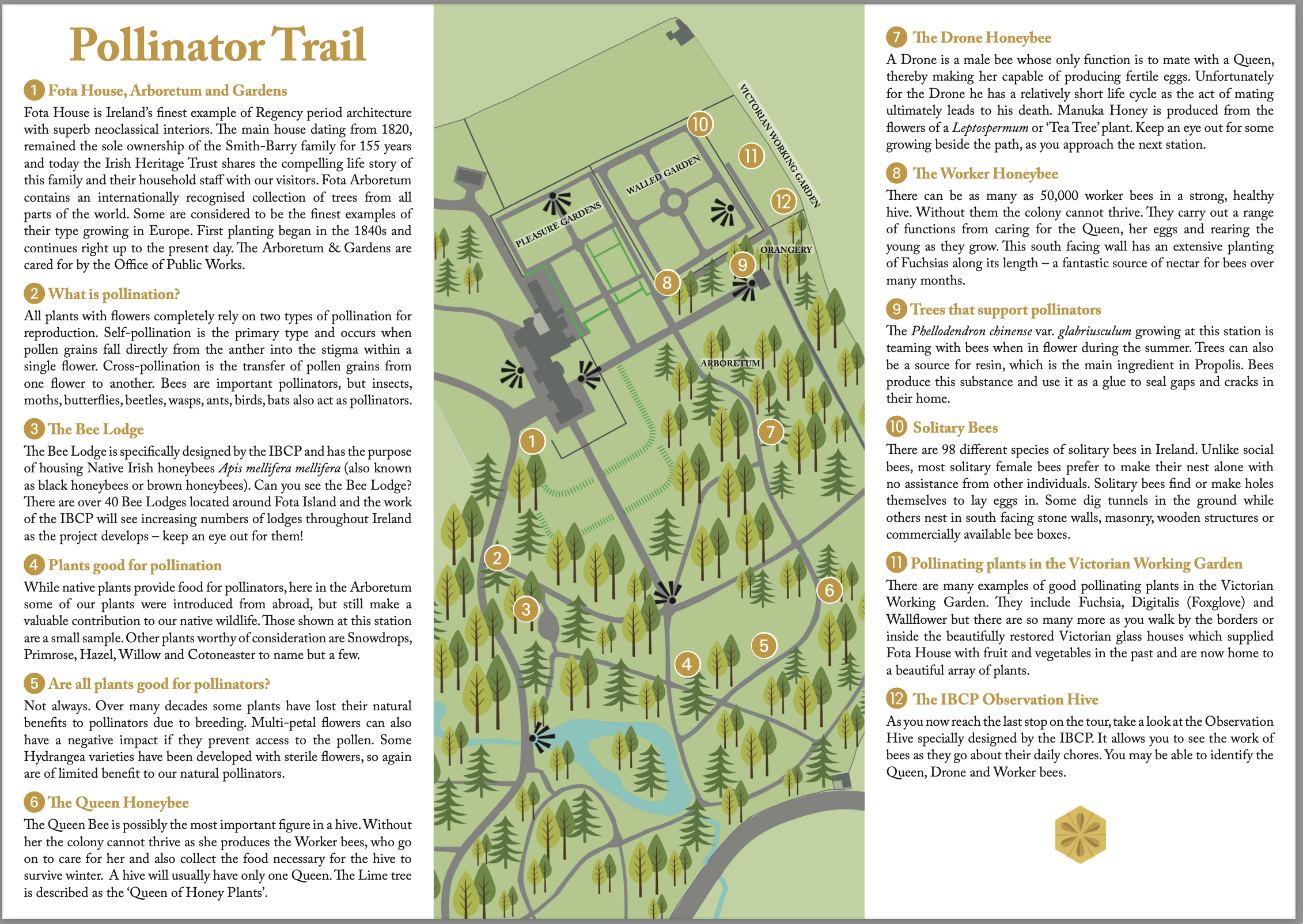Fota Pollinator Trail – Station 07
A Drone is a male bee whose only function is to mate with a Queen, thereby making her capable of producing fertile eggs. Unfortunately for the Drone he has a relatively short life cycle as the act of mating ultimately leads to his death.
The Drone Bee
If a Queen wants to lay some Drone eggs she first of all measures the Diameter of the cell with her front legs and if large enough she deposits a Drone egg in it. This is a haploid egg meaning it only contains half the no of genes (16) than the Queen herself has (32). Consequently, it is male.
Like the worker the Drone egg hatches on Day 3 and goes through several moults i.e. it undergoes changes in its body. The cell is capped on day 10 and further changes (called Metamorphosis) take place until Day 24 when the adult Drone emerges.
Thirteen days after the adult bee emerges it capable of mating with a Queen bee from another hive. During this time the Drone is confined to the hive except for orientation flights and cleansing flights to get rid of waste that has built up in his body over time. It must mate with a Queen as soon as possible.
Drone bees fly to areas where Drone bees meet up called Drone Congregation Areas which Queen bees seek out when they want to be mated.
Once a Drone bee mates with a Queen he dies. Also, Drones are kicked out of the hive at the start of winter to fend for themselves and to save food stores.
Many of you, I’m sure, will have heard of Manuka honey, but do you know the origin of this much lauded product? It’s associated with New Zealand and is the product of bees working the flowers one particular plant. That plant is Leptospermum scoparium (Manuka Myrtle / Tea Tree). We have a range of Tea trees growing in the Arboretum, all of which attract bees for pollination. Keep an eye out for some as you make your way to the next station.



